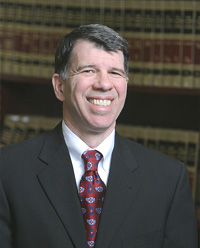By Elliott Andalman
(301) 563 – 6685
eandalman@a-f.net

The legislation was introduced in the Senate by Orrin Hatch (R-UT) and in the House by Sam Johnson (R-TX) and is known as ‘The Social Security Disability Insurance and Unemployment Benefits Double Dip Elimination Act of 2015.’
The History of UI & SSDI Benefits
This issue is not new. When workers are sick and lose a job because of illness or injury, they often apply for both Social Security and unemployment benefits. This is perfectly understandable as workers often want to try to continue working and often do not know if their medical disability will be totally disabling or will last for a year as required to obtain Social Security Disability Insurance (SSDI) benefits.
While it is perfectly reasonable to apply for both benefits, the question remains as to what should happen if both unemployment and Social Security benefits are awarded. Administrative Judges handling SSDI claims have approached the matter in different ways. Some will not award a period of disability for any month in which a claimant was awarded UI benefits. Others have awarded SSDI benefits despite the award of UI benefits with the understanding that just because an individual wanted to work and was looking for work, does not mean that they were medically capable of working full time, which is part of the qualifications necessary to be awarded SSDI.
Legislation Concerning Social Security & Unemployment Benefits
President Obama has proposed something similar in his 2016 budget. His proposal suggested reducing the disability benefit in any month UI benefits are also received, in order to eliminate the concurrent benefit payment. The President’s budget estimated that this rule would result in $2 billion dollars of government savings over 10 years.
Recent legislation introduced in Congress provides for the following:
- It would only apply for individuals applying for benefits after January 1, 2016;
- It would deem people receiving UI benefits as engaging in substantial, gainful activity and therefore ineligible for DI benefits.
- Once receiving SSDI benefits, any month in which unemployment benefits are also received will be considered part of a Trial Work Period.
According to Hatch and Johnson, the legislation provides for $5.7 billion in savings over 10 years, as estimated by a Social Security actuary.
Individuals considering applying for both unemployment and Social Security benefits should be aware of the potential problems in applying for both benefits. If possible, it is recommended that individuals determine which benefit best fits their situation and only apply for that benefit. This may require consultation with your physician and may be complicated by the availability of other disability benefits such as Short- and Long Term Disability Insurance and disability retirement pensions, which are available to most federal and state employees.
Contact Us for More Information
If you are considering applying for Social Security and unemployment benefits, or already receive both benefits and wonder how recent legislation will impact you, we can help. The disability attorneys at Andalman & Flynn can discuss your situation with you to help you determine the best benefit for you and successfully submit your application—no matter where you are located in the U.S. We provide legal representation from clients in the nearby DC area, all the way to California and everywhere in between. To learn more or schedule your consultation, contact us online or call me directly at (301) 563 – 6685.








